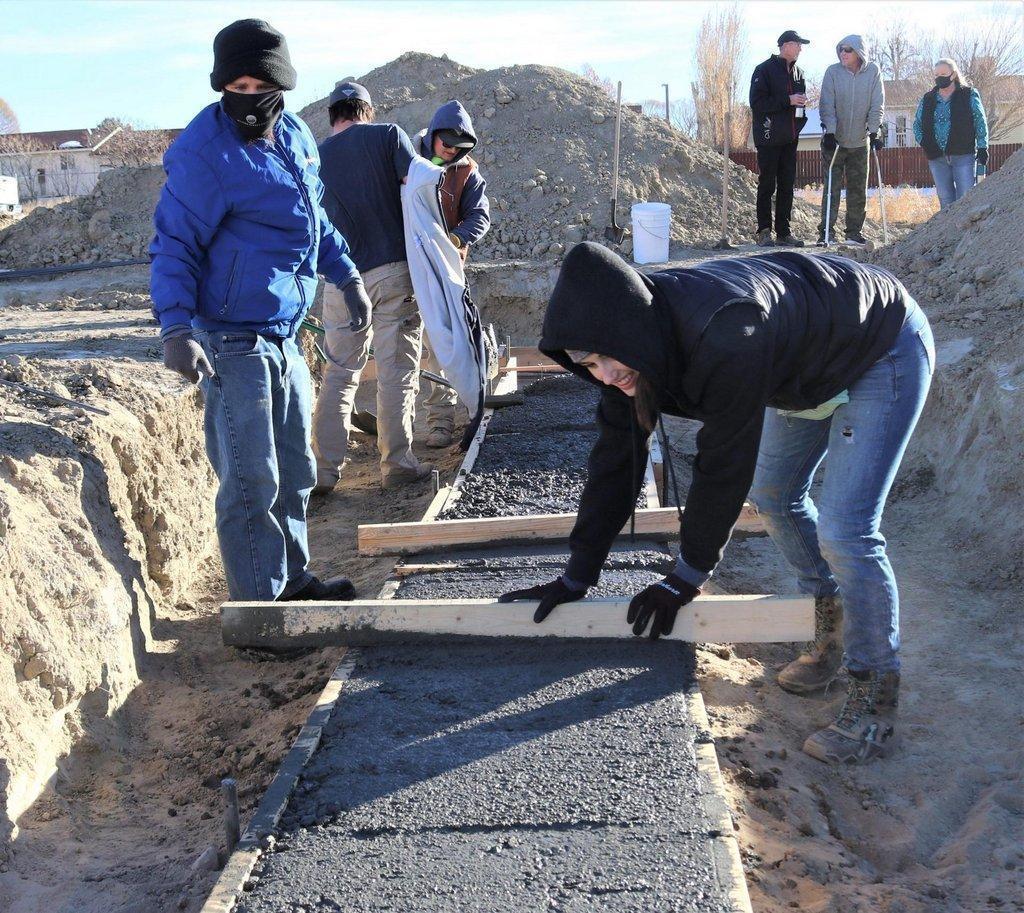SEUALG Press Release
Northeastern Price is seeing a resurrection of what used to be termed a barn raising effort, where people from a group or the community came to help others build a house or barn to get them started on a new life. In this case, it is four families who are helping each other build houses for themselves through a program administered by the Southeastern Utah Association of Local Governments (SEUALG) with financial support from the United States Department of Agriculture.
There has been a USDA program that, for years, was used to help income-qualified families put sweat equity into existing distressed properties by not only repairing them, but updating them and making the neighborhood a better place to live. That program has now grown into one that also allows people in that same category to build new houses.
“Because of the limited number of homes for sale in our current housing market, we are being guided to offer new ground-up construction. We will continue to do housing rehabs, but we have found it is time to enter into this program,” said Barbara Fausett, who administers the USDA Self Help and Housing Rehab Programs at SEUALG. “The contract we have with USDA has now been amended so that we can offer new construction as well. The support for those approved will include the cost of the lot and materials to build a brand new home with zero down, no origination fee or mortgage insurance premiums, which saves the applicants close to 2 percent on their closing costs.”
She said the participant and any volunteers will put in the sweat equity on the home as it is constructed, earning equity at completion.
“A construction supervisor is in place to direct, coordinate and oversee the project and is teaching the participants how to do the various tasks involved in building a house,” she stated. “There are some things that will be sub-contracted out, such as some foundation work, electrical, plumbing and HVAC, but the program is designed to get the home built at a much lower cost in order for that equity to be gained in the overall cost of the project through the participant’s own work.”
The homes that are being built under the program are in the realm of affordable housing with the area loan limits up to $265,400. The house plans for the homes to be built range in size from 1,100 to 2,000 square feet. She noted that a lot of families need a three-bedroom, two bath home with a two-car garage while others may not want a home quite as big.
The volunteers that work on each house include those that are in the program at the same time. In the case of the first home that is presently being built, it has had its excavation work done and is now getting concrete laid for the foundation. Many of those that are working on it will also have homes on the same block.
Fausett said that those on the higher end of the maximum loan eligibility often discover they can afford a larger home if their income is in a category that provides a subsidized payment. Depending on the household’s repayment income, the government could possibly pay a portion of their interest, which is monitored through documentation of their income annually. The subsidy goes down as their income increases. This allows people to get into a larger home at the present time where they wouldn’t be able to afford as much through a conventional lender. This gives them a chance to buy instead of rent, with a payment close to what they are paying for rent, and gain the sweat equity without any cash down payment.
SEUALG’s current contract with USDA requires the construction of eight new homes and four rehabs or a combination of them in this two-year contract period, but they could renew their contract early in order to offer more of these projects to the community. Fausett said there are only four spots available and they will be filled quickly as they will be starting another group for the next phase soon.
“There are a lot of people out there with incomes that will qualify for this program. For example, if a family of four has an income between $24,000 to $56,900, and their debt ratio qualifies, they would probably be a good candidate for the program.”
In addition, it is important to remember that with more people in a household, the income limits increase. For example, a family of five in Carbon and Emery counties can make up to $75,100 and qualify. The best way to see if one can qualify is to contact Fausett and she will help you apply for the program.
“This is a hand up, not a handout,” she said. “Each participant will gain the knowledge and skills to maintain their home and will carry a pride in ownership like no other, making for a great neighbor.”
Interested parties can contact Barbara Fausett at (435) 613-0026 or email her at bfausett@seualg.utah.gov.


